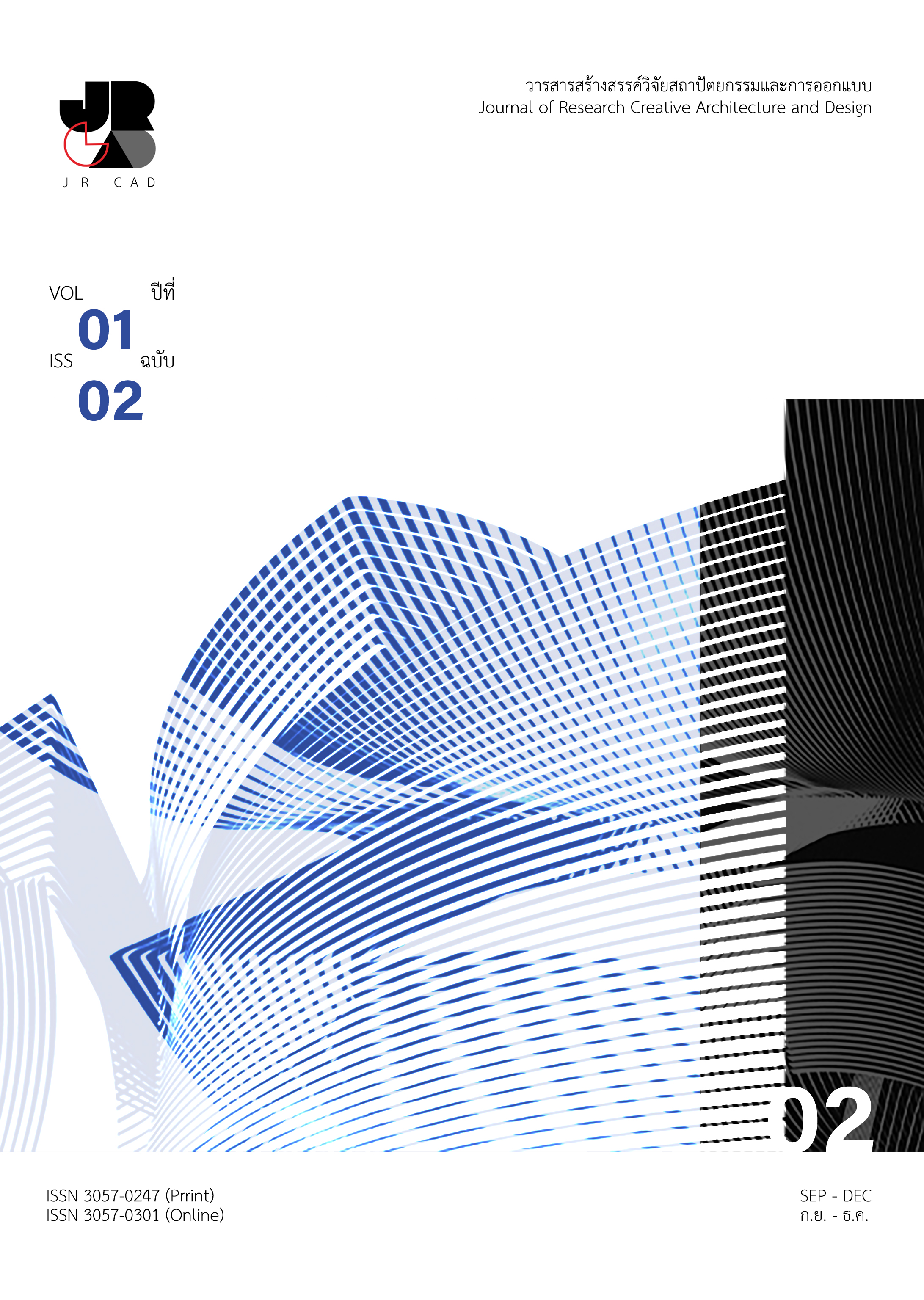A Comprehensive Review of Design Thinking in Architectural Design การทบทวนการคิดเชิงออกแบบในการออกแบบสถาปัตยกรรม
Main Article Content
Abstract
This paper reviews how Design Thinking is used in architectural design, exploring key findings, challenges, and future directions. Design Thinking, with its core principles of empathy, ideation, prototyping, and testing, is seen as a transformative approach in changing how architects approach creativity and user-centricity. The review highlights the focus on people in design, ensuring that spaces are not just functional but also deeply connected with diverse user needs. The infusion of innovation and creativity into traditional architectural practices challenges design norms and expands architectural expression possibilities. User satisfaction and inclusivity in Design Thinking contribute to more responsive and inclusive built environments, considering different perspectives and creating a sense of ownership among users. Acknowledging challenges and critiques, including potential time constraints and the need for technical expertise, the paper emphasizes the importance of strategic application, collaboration, and a balanced integration of Design Thinking principles. Exploring future directions, such as the integration of emerging technologies, underscores the dynamic and evolving nature of Design Thinking in the architectural field. In conclusion, Design Thinking emerges as a significant and transformative tool for architects, shaping a design process that not only meets functional requirements but also deeply resonates with individuals and communities, ultimately contributing to the ongoing evolution of the architectural profession.
Article Details

This work is licensed under a Creative Commons Attribution-NonCommercial-NoDerivatives 4.0 International License.
บทความที่ได้รับการตีพิมพ์เป็นลิขสิทธิ์ของคณะสถาปัตยกรรมและการออกแบบ มหาวิทยาลัยเทคโนโลยีพระจอมเกล้าพระนครเหนือ


